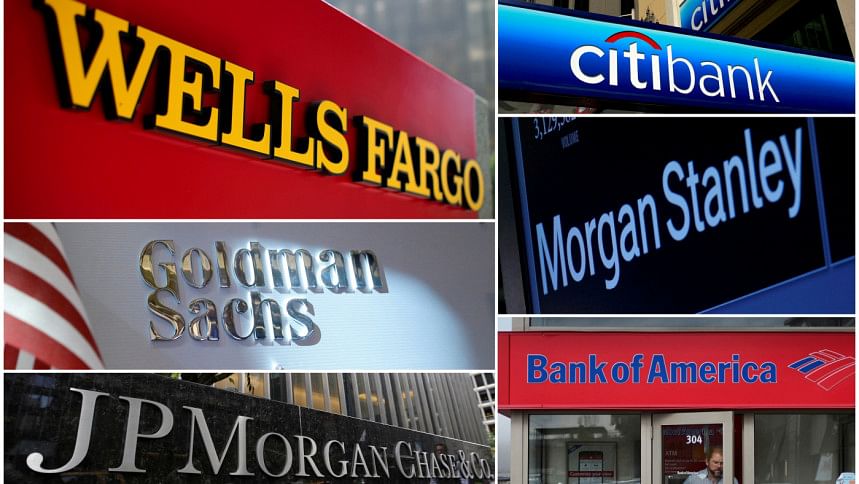Mega-banks menaced by closing jaws in murky waters

Big US banks are getting squeezed. Their stock prices have undershot the broader market over the past year, dogged by growing concerns ranging from interest rate cuts to profitability-sapping rule changes. Financial results unveiled on Friday by JPMorgan , Bank of America , Citigroup and Wells Fargo made clear they're squirming in rising bad debt, a sea of aberrant charges and unpredictable changes in customer behaviour. A quest for expenses to cut looks likely to become a preoccupation.
Last year's arc was simple enough: lending rates increased, but so did the amount depositors wanted for their savings. Curiously low default rates through the pandemic also inched up. At the end of 2023, however, such trends were drowned out by accounting white noise. Bank of America took a $1.6 billion charge from quitting an index used to price lending agreements. Citi suffered from the plunge in Argentina's peso. The four mega-banks took a combined $8.6 billion hit from regulators to cover the failures of mid-sized lenders.
The quartet agree that creditworthiness is slipping. Credit card delinquency picked up as did write-downs of loans backed by commercial real estate. So far, these items are more nuisance than menace. Bank of America indicated $107 million of office property loans would be uncollectible, but that compares to a portfolio of $18 billion. Citi, a powerhouse in credit cards, said 3.8 percent of loans went bad, compared with 2.2 percent a year ago; it also has set aside enough profit to cover more than twice the current level. Where those numbers go next depends largely on the US Federal Reserve and employers, both of which have stoked great debate.
With so much up in the air, bank bosses will be under greater pressure to focus on the handles they can pull. The main one is costs. All four lenders shared one disconcerting feature from October through December: revenue failed to grow more quickly than expenses, even ignoring the various one-offs. At Bank of America, the gap was 5 percent; at Citi it was 8 percent.
Getting those "jaws" to swing to the positive will be difficult. Factors that drive up costs, such as paying staff and buying technology, show no signs of reversing. Citi boss Jane Fraser has already found 20,000 employees to jettison by 2026. Her peers are destined for similar exercises.
The four biggest US banks reported fourth-quarter financial results on January 12, showing a rise in bad-debt costs and one-off hits from charges levied by regulators to cover bank failures earlier in 2023.
JPMorgan generated $39.9 billion of revenue, a 12 percent increase from the same period a year earlier. Earnings excluding one-offs such as a Federal Deposit Insurance Corp levy were $12.1 billion, roughly 10 percent higher than in the fourth quarter of 2022, according to a Breakingviews calculation.
Bank of America reported $23.5 billion of revenue, 4 percent lower year-on-year, with earnings down 17 percent to $5.9 billion. Those figures also exclude a pre-announced loss incurred from a change to an index used by the bank to price loans.
Citigroup's revenue of $17.4 billion was 3 percent lower from a year earlier, or up 2 percent after stripping out divestment effects and other one-offs. The bank lost $1.8 billion, with earnings driven down both by various non-recurring items, and costs from Chief Executive Jane Fraser's restructuring efforts.
Wells Fargo reported $20.5 billion of revenue, a 2 percent increase from the previous fourth quarter. Earnings of $3.5 billion were 9 percent higher year-on-year, reduced by the FDIC charge but also set against a large prior-year charge for fines and legal settlements.

 For all latest news, follow The Daily Star's Google News channel.
For all latest news, follow The Daily Star's Google News channel. 




Comments